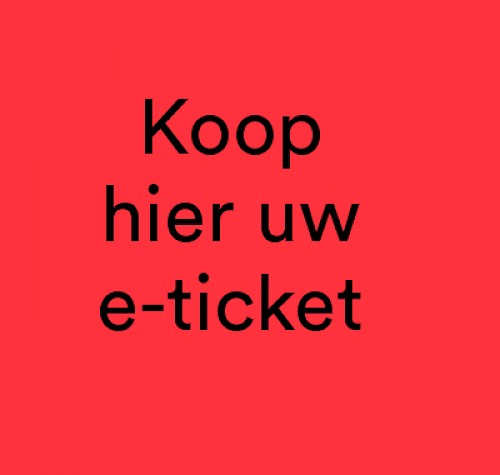Katja Mater: What We See &
What We Know
13.10—8.12.2013

Art often begins with the desire to make something visible that otherwise would remain wholly or partly invisible — wondrous details, complex structures and aspects of reality that are beyond the reach of our natural perception. The latter is also an important starting point for Katja Mater. While she tries to capture the poetry of the moment, she unveils the beauty of basic laws of physics.
Site-Specific Density Drawings

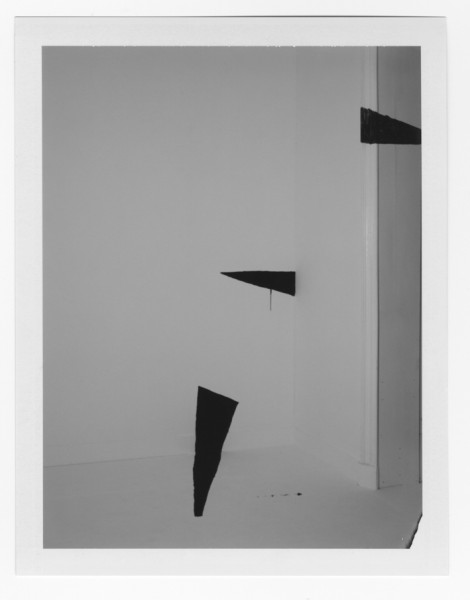
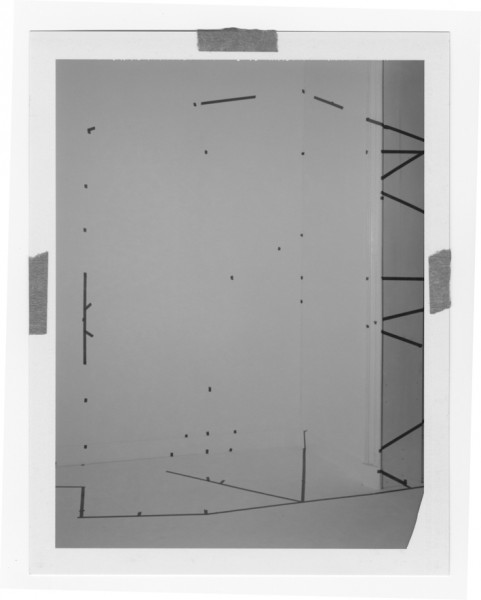

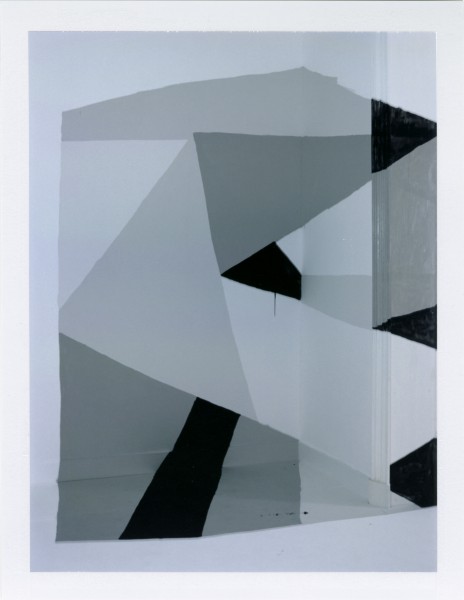
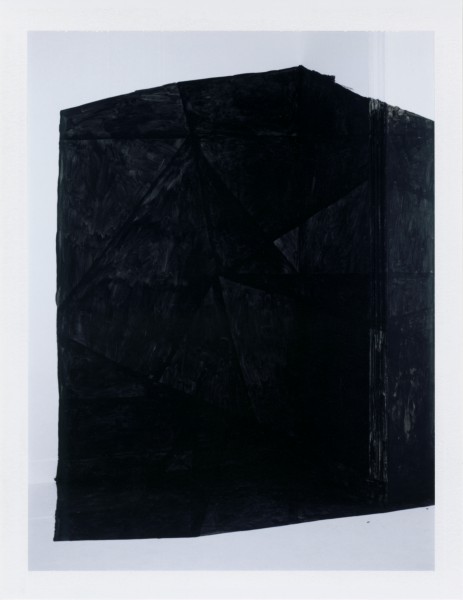
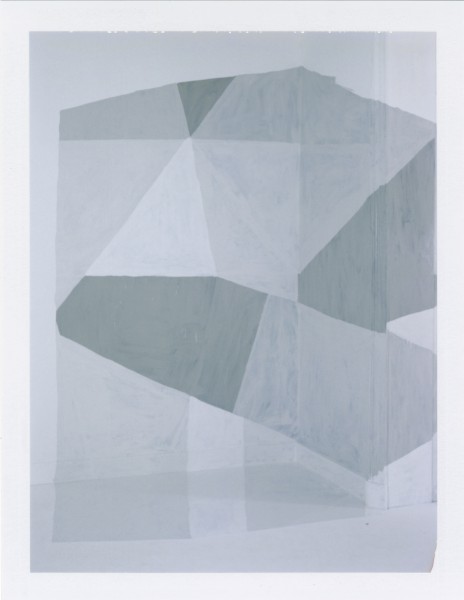
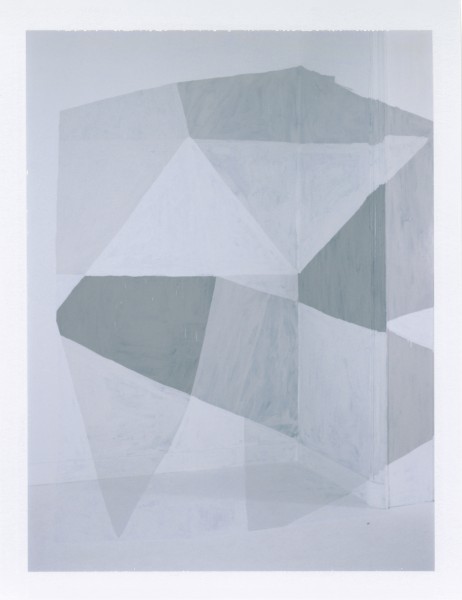
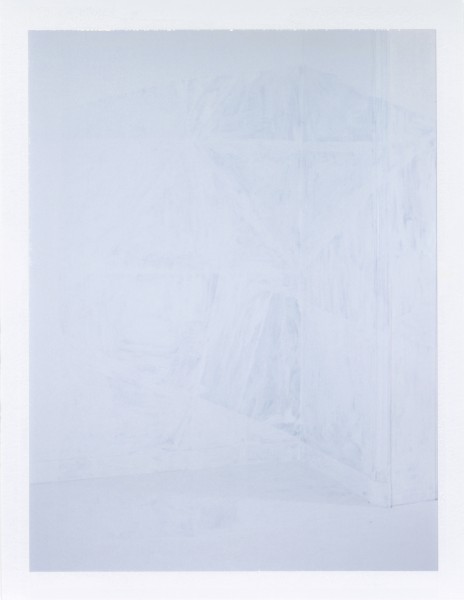
In instant photography — such as the Polaroid camera — the time of exposure (almost) coincides with that of the development of the image. As with painting, the colours and tones are mixed on the spot. When exposing the same surface several times, one can introduce a layering into the final image. This is exactly what Katja Mater does in her Site-Specific Density Drawings. The basic principle of this work is quite simple; she paints the white wall and floor in the exhibition space — section by section — black and then white again. The artist photographs the different stages and stacks various ‘moments’ on each other by working with multiple exposures. She thus creates layered images; two on the way to black and two on the way back to white. And since in the end only a white wall remains, one single picture documents the wall when painted completely black. The images constitute the memory and documentation of this process as well as something entirely new: ‘paintings’ that we would otherwise never have seen.
Composition of Light

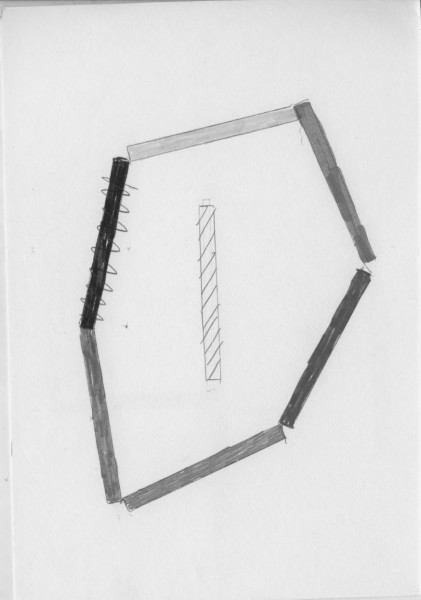
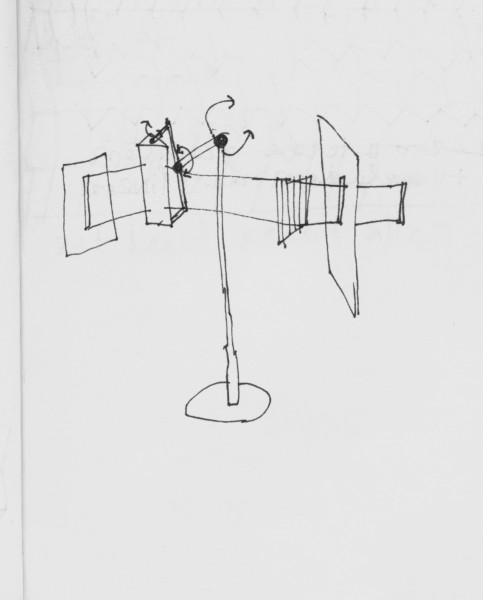
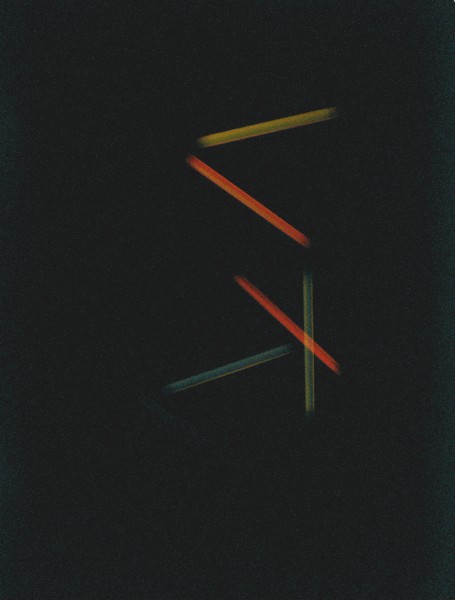
We do not notice white light. It is so normal that we usually do not realise at all how much it colours our perception and reality. However, when white light falls through a prism, suddenly all colours of the rainbow appear: red, orange, yellow, green, blue and indigo. This wondrous phenomenon is embedded in our everyday reality. For Composition of Light, Mater built a device that can project the colours caused by the refraction of white light onto the wall. She then filmed these colours, exposing the same filmstrip over and over again, so the colours of the projection — the end result — reappear side by side. A new composition is created from the ingredients of ordinary light.
Searching for White
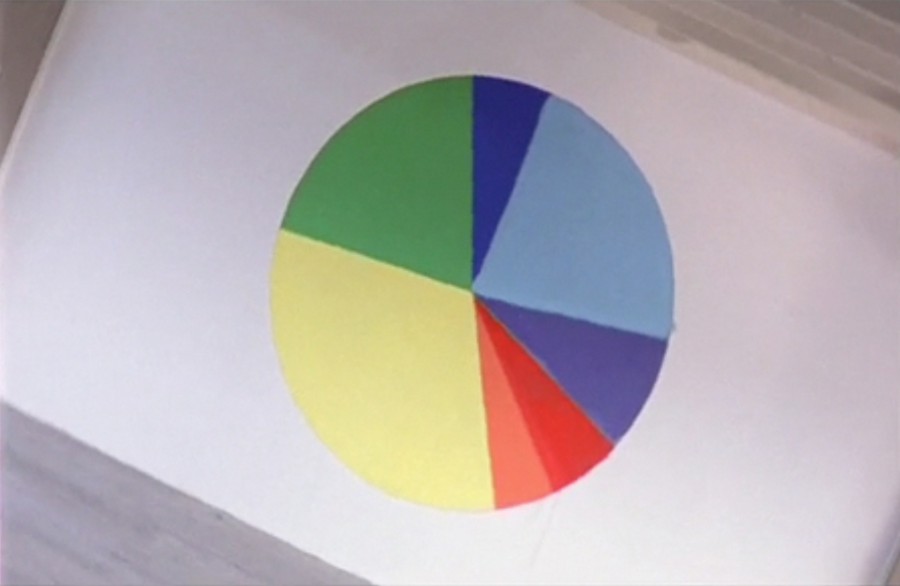
By making use of a colour wheel Mater attempts to blend the spectrum colours into white. The colour wheel is based on a simple principle; the faster the wheel spins, the less the human eye is able to distinguish the various colours. With the right combination of colours, a white circle appears. Using a trial-and-error approach, Mater attempts to find the right balance between the colours that would result in a white circle. She starts with an imperfect colour wheel on a wall, filmed with a camera that rotates around its own axis, so the colours will blend in the recording. At a certain point, Mater walks into the image, only visible as a black dot, in order to adjust the colours. The palette slowly shifts from yellow to green to blue, until the circle becomes (almost) white.
Colour Wheels on Black and White Slides

Black-and-white photography is based on a gradient system; according to the logic of contrast and exposure, each colour must be translated in a shade of grey in order to be displayed. This principle is also applied in the slide series 38 Colour Wheels on Black and White Slides, in which the colours of Maters handmade colour wheels correspond with a variety of shades of grey. Here, the artist seems to playfully refer to the supposed ‘objectivity’ of photography — it is not a clear record of what we see, but an interpretation of reality.
Density Drawings
The previously shown Site-Specific Density Drawings are based on the principles of Katja Mater’s Density Drawings, in which the camera becomes a drawing tool. Using ink, pencil or paint, Mater colours the planes until a monochrome image is created. The colour of the paper blends with the colour of the used drawing materials. Meanwhile, the artist photographs the different stages by exposing a single negative over and over again. The more exposures, the darker and more saturated the plane. This results in two ‘paintings’, the layered photographic image and the monochrome painted surface, thereby questioning which one is the end product and which one merely serves as documentation.
Time Passing Objects
Photography means traveling back to a time that no longer is. Or to several moments at the same time, when you stack different moments in time, as Katja Mater does. In Time Passing Objects she paints three-dimensional objects made of paper and cardboard. Because the paint that she applies makes the objects heavier, they become increasingly unstable. The objects also move slightly when new layers of paint are applied. During the multiple exposures, this leads to shifts, resulting in new shades and tones in the photographic image. Coincidence plays an important role in the process; new forms of fragile beauty arise, like snow crystals on a window or footprints in the sand.
Motion Drawing
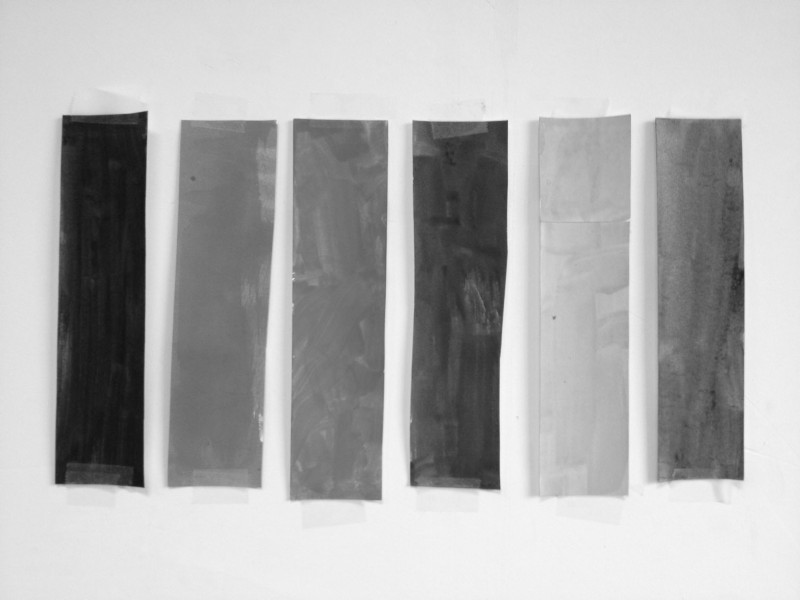

In this film Katja Mater translates the principle of the Density Drawings into moving images by introducing it to the realm of (animation) film. In fact, the Density Drawings can already be seen as a form of ‘animation’ — something that is explicitly addressed in this work. Painting is always a form of ‘moving image’, given the gradual process in which the image is created. In the film, Mater moves a camera along gradually painted paper strips (shown elsewhere in this room). As in the photographic series, the film is exposed multiple times.
Interior A-H
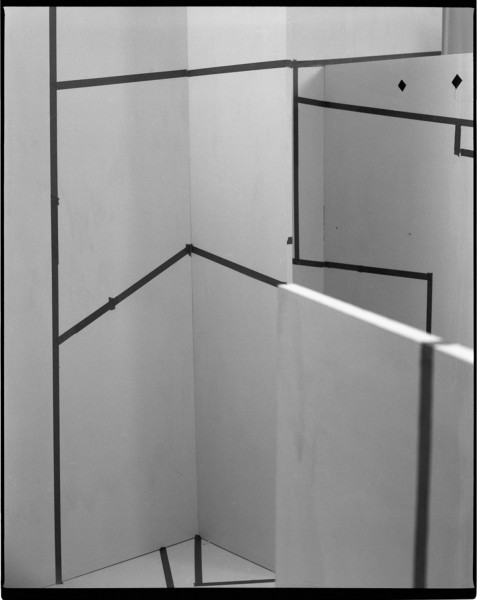
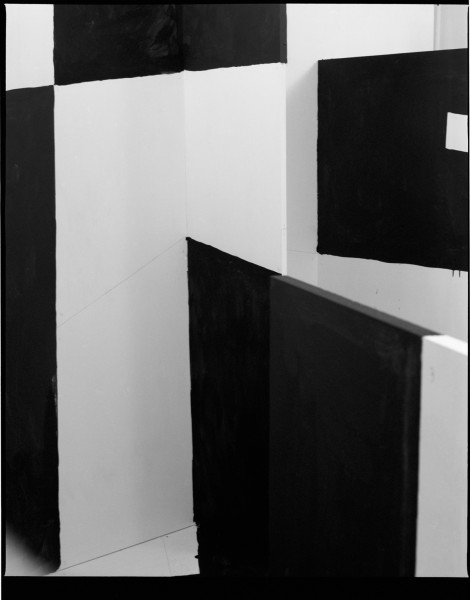
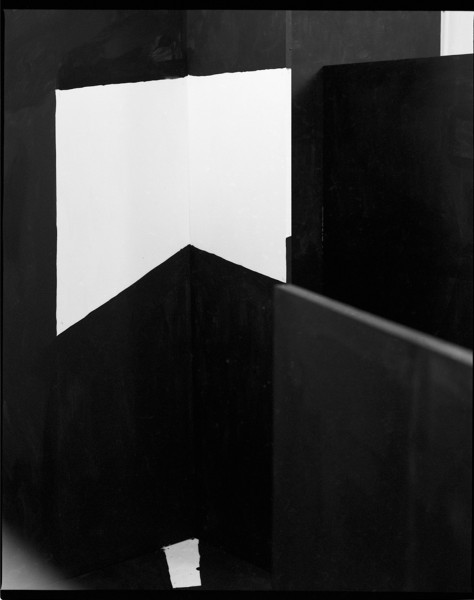
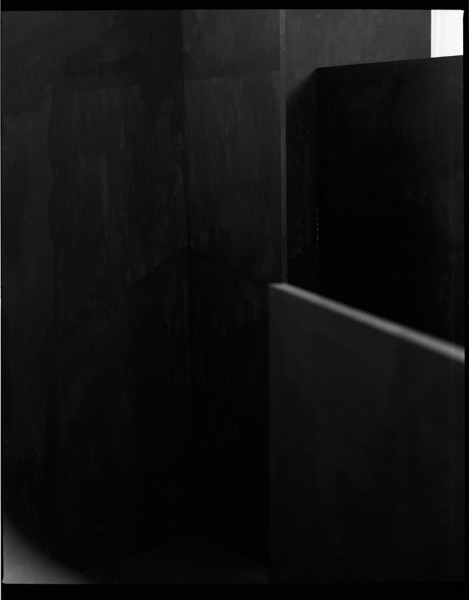

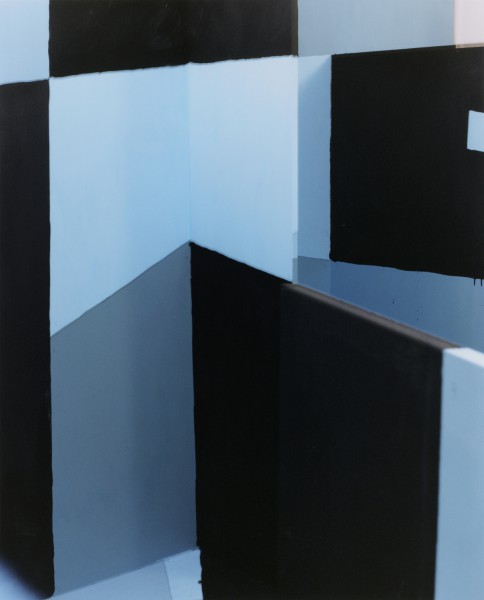
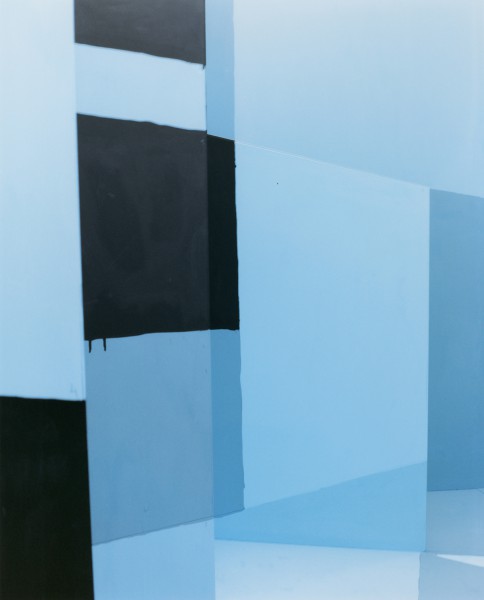
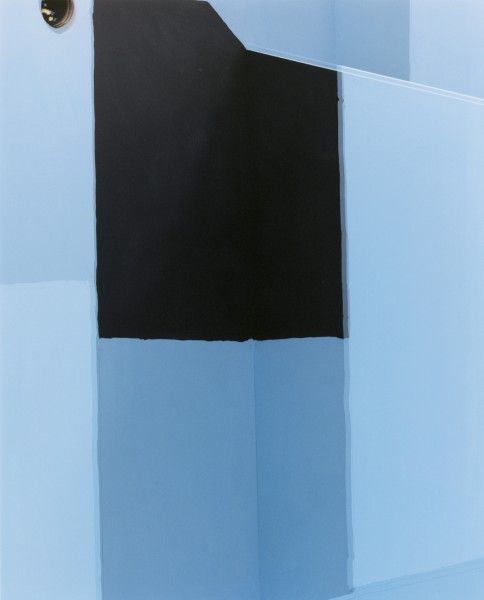
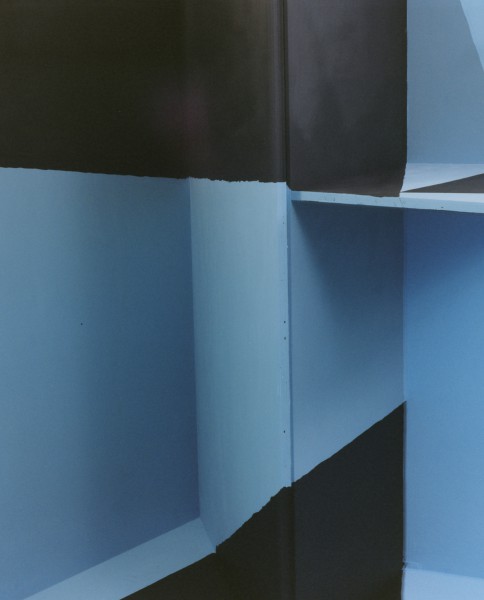
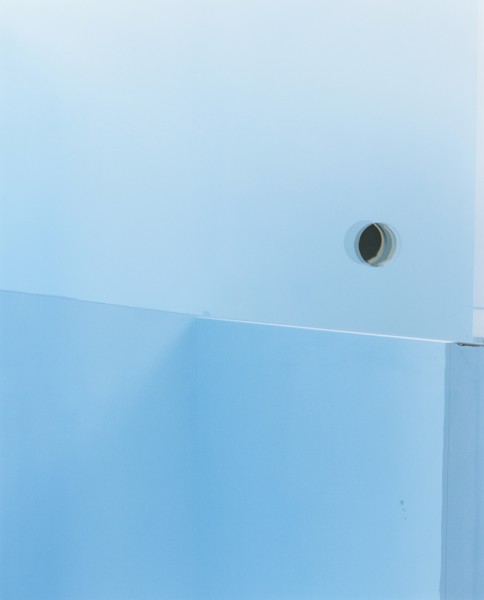
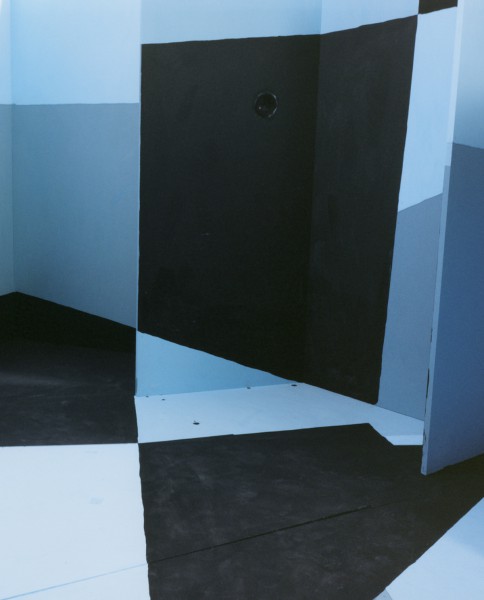
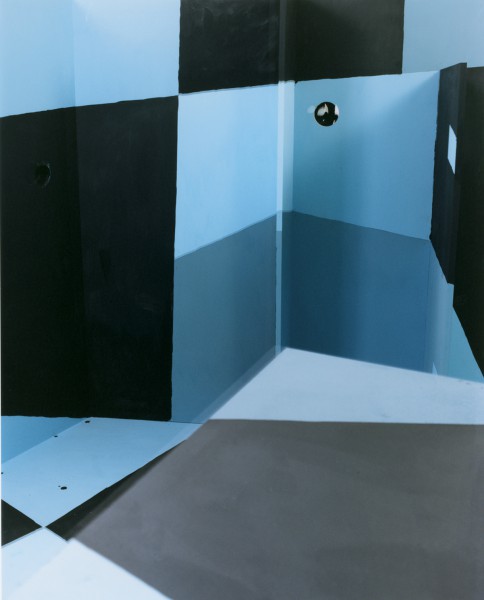
Mater photographed the inside of a self-built wooden room through eight holes, while gradually painting the interior of the wooden structure from blue to black. The different camera angles create a strange impression of the space that seems to float between a three-dimensional reality and a two-dimensional representation of that reality. The visible holes, architectural lines and angles are the only elements that anchor the image in the pre-photographic reality and refer back to the black wooden construction in the exhibition space.
Residuum
Residuum refers to Katja Mater’s series Objects. The image presented here is a single shot of a painted object that she used for this earlier series. The photographed object is completely black, just like the background. The image documents the state of the paper object at the end of a process it has gone through.
Folded Variations
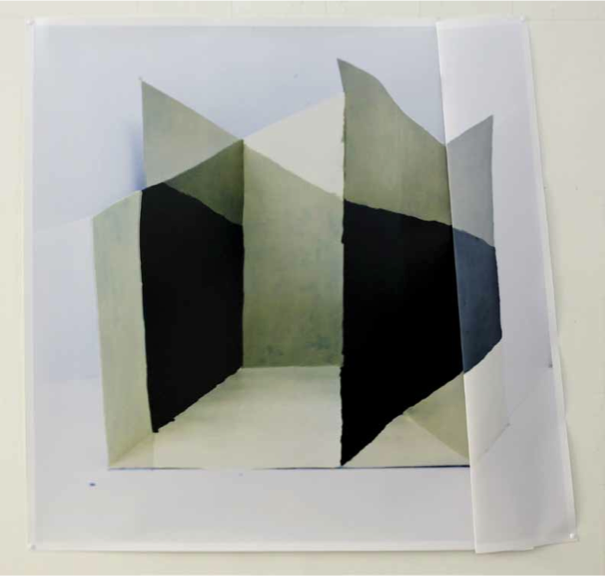
A photograph is not just a representation of something, it also is something, such as a piece of paper that you can tear, crumple or fold. The Folded Variations series consists of paper objects that Mater painted and documented through multiple exposures on a single negative. By folding the photos in different ways, new paper ‘objects’ are created that change the form of the depicted objects and give them a new, literal sense of depth.
Interview
Katja Mater interviewed by Valentijn Byvanck for 4ART
Biography Katja Mater
Katja Mater (1979) graduated from the Gerrit Rietveld Academie, Amsterdam in 2003 en completed her studies at De Ateliers in the same city. She was artist in residence at the Skowhegan School of Painting & Sculpture and The Mac Dowell Colony, both in the United States, and Künstlerhaus Bethanien in Berlin. Her work was shown in, among others, Galerie Martin van Zomeren (2013), Fotogalleriet, Oslo (2012), De Vleeshal, Middelburg (2012), Tanya Bonakdar Gallery, New York (2012) and, Centre d’Art Contemporain, Genève (2011).
Links
Katja Mater in list 24 Artists to Watch 2013.
Maxine Kopsma about Katja Mater in MetropolisM.
